▼ India fastest growing economy among G-20 nations [02-24-17]
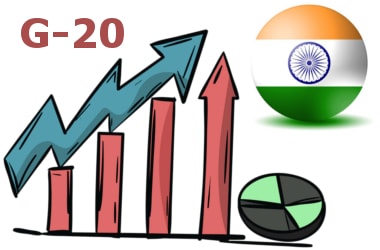 Moody has predicted India will be the fastest growing economy among G-20 countries clocking a 7.1 per cent growth in 2017. Moody has predicted India will be the fastest growing economy among G-20 countries clocking a 7.1 per cent growth in 2017.
The Indian economy had slowed in the fourth quarter of 2016 due to the withdrawal of 86 per cent of the currency in circulation, without an immediate replacement.
India is forecast to have the fastest growing economy among all G-20 countries with growth put at 7.1 per cent for 2017, down from a previous expectation of 7.5 per cent because of the effects of demonetisation.
With regard to global growth, Moody's said continuing cyclical recovery in global economic activity with growth in G-20 countries picking up modestly to 3 per cent in 2017 and 2018 from 2.6 per cent in 2016.
The potential shifts in US policy add uncertainty to this forecast.
There is unusually high uncertainty around our global forecasts due to the wide range of outcomes that could arise from significant shifts in US policy on a number of domestic and international issues, including trade and immigration.
The systemic risks to this forecast may stem from shifts in US trade policies, risks to global financial markets and emerging market economies if American interest rates were to rise faster than anticipated and/or the US dollar were to appreciate sharply.
Also there could be risks of a sudden and sharp deceleration in China and political and fragmentation risks in the EU and the euro area, Moody's indicated.
In the report titled 'Modest Acceleration in the Global Economy, but Shifting US Policies Inject Uncertainty', Moody's said there is a high risk of a significant protectionist shift in US trade policy and could inflict lasting damage to the global economy.
Regarding Asia, Moody's said China's economy stabilised around the official growth target of 6.7 per cent in 2016. It will likely continue to decelerate to 6.3 per cent and 6 per cent in 2017 and 2018.
Moody's expects that the US economy will get additional lift from a stimulative fiscal policy stance pushing growth above potential.
Accordingly, Moody's has revised its real GDP growth forecast to 2.4 per cent in 2017 and 2.5 per cent in 2018, from 2.2 per cent and 2.1 per cent, respectively.
Moody's forecast assumes the US Federal Reserve will raise the federal funds rate by 75-100 basis points in three to four rate hikes in 2017.
US Federal Reserve: Know More
- Chairperson: Janet Yellen
- Founder: United States Congress
- Founded: 23 December 1913
- Headquarters: Washington, D.C.
- Central bank of: United States of America
|
▼ SBI Research: Q3 GDP at 5.8%, FY17 at 6.6% [02-23-17]
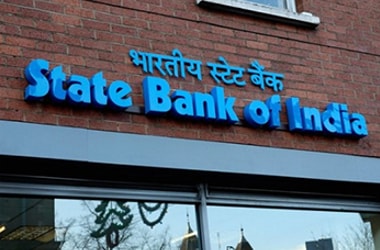 The economy would have grown under-6 per cent in the third quarter, destroyed by the note ban, according to SBI Research. The economy would have grown under-6 per cent in the third quarter, destroyed by the note ban, according to SBI Research.
The government will release the December quarter GDP print on February 28.
SBI research holds GDP growth to be decisively lower than 6 per cent in Q3 at 5.8 per cent and 6.4 per cent in Q4.
Overall, the estimate for H2 is 6.1 per cent with a downward bias against CSO's 7 per cent and the fiscal 2017 growth at 6.6 per cent.
In the next year growth could move up faster if demand comes back faster post-remonetisation, it added.
The report said growth will be pulled down by the poor show by sectors like construction, real estate, cement and FMCG, which are likely to witness a decline in sales in Q3 and will recover thereafter.
With the CSO (Central Statistics Organisation) estimate of 7.1 per cent for fiscal 2017, the Q3 and Q4 GDP growth would be around 6.1 per cent and 7.8 per cent.
This is improbable given the extent of liquidity shock that has led to a drastic consumer spending shock.
The 7.1 per cent GDP estimate by CSO implies a 7.8 per cent GDP growth in Q4, which looks highly unlikely.
As per the CSO, GDP is likely to grow by 7.1 per cent in fiscal 2017 compared to 7.9 per cent a year ago.
RBI, on the other hand, estimated GVA growth at 6.9 per cent as against its earlier estimate of 7.6 per cent. Of this 70 bps reduction, 35 bps are attributed to demonetisation and the rest to base effect.
CSO: Know More
- The Central Statistics Organisation (CSO) of India is responsible for co-ordination of statistical activities in India.
- It also oversees evolving and maintaining statistical standards.
- It has a well-equipped Graphical Unit.
- The CSO is located in Delhi.
- Some portion of Industrial Statistics work pertaining to Annual Survey of industries is carried out in Calcutta.
|
▼ IMF: Indian GDP to slow to 6.6% post note ban [02-23-17]
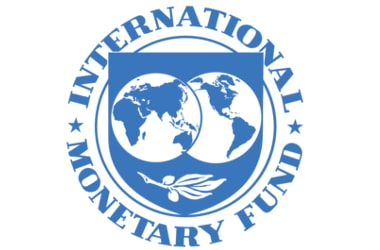 IMF says India's growth is projected to slow to 6.6 per cent in 2016-17 fiscal due to the strains that have emerged in the economy as a result of "temporary disruptions" caused by demonetisation. IMF says India's growth is projected to slow to 6.6 per cent in 2016-17 fiscal due to the strains that have emerged in the economy as a result of "temporary disruptions" caused by demonetisation.
In its annual report, however, the International Monetary Fund (IMF) said demonetisation would have only short term impact on the economy and it would bounce back to its expected growth of more than eight per cent in the next few years.
The post-November 8, 2016 cash shortages and payment disruptions caused by the currency exchange initiative have undermined consumption and business activity, posing a new challenge to sustaining the growth momentum.
Growth is projected to slow to 6.6 per cent in FY2016/17, then rebound to 7.2 per cent in FY2017/18, due to temporary disruptions, primarily to private consumption, caused by cash shortages.
India's economy grew at 7.6 per cent in 2015-16 due to a favourable monsoon, low oil prices and continued progress in resolving supply-side bottlenecks, as well as robust consumer confidence.
The investment recovery is expected to remain modest and uneven across sectors, as deleveraging takes place and industrial capacity utilization picks up, the report said.
IMF Directors supported the Indian efforts to clamp down on illicit financial flows, but noted "the strains that have emerged" from the currency exchange initiative.
IMF EDs commended New Delhi for its strong policy actions, including continued fiscal consolidation and an anti-inflationary monetary policy, which have underpinned macroeconomic stability.
As such, the IMF recommended continued vigilance to potential domestic and external shocks and urged the authorities to further advance economic and structural reforms to address supply bottlenecks, raise potential output, create jobs, and ensure inclusive growth.
All About the IMF
- Headquarters: Washington, D.C., United States
- CEO: Christine Lagarde (since 2011)
- Founded: 27 December 1945, Bretton Woods, New Hampshire, United States
- Leader: Christine Lagarde
- Staff: 2700
- Founders: John Maynard Keynes, Harry Dexter White
- Parent organization: United Nations
|
▼ Digital matrix to promote cashless economy [02-22-17]
 Amitabh Kant, Chief Executive Officer of the government's policy think-tank NITI Aayog, said on 21st Feb 2017 that the government is developing a digital matrix. Amitabh Kant, Chief Executive Officer of the government's policy think-tank NITI Aayog, said on 21st Feb 2017 that the government is developing a digital matrix.
The matrix to evaluate states in the push for a less-cash economy.
States are playing a critical role in getting citizens to opt for digital payments.
Stating that the government was taking steps to promote digital payments and bring digital on par with cash, Kant said that the Budget had announced a number of incentives including cash back and referral bonuses.
Kant said the government was also pushing for an Aadhaar app and a reduction in the Merchant Discount Rate.
RBI had proposed to drastically cut MDR charges on debit card payments from April 1 with a view to maintain momentum of digital transactions post note ban, especially among small merchants.
Kant said the ultimate aim was to enable to market to take over and drive the digital payment movement in a big way.
Continuing the digital push, the Reserve Bank of India had on 20th Feb 2017 launched the BharatQR platform.
This is a platform where scanning a QR code through a mobile phone will allow a customer to transfer money from one source to another.
|
▼ Digital Haryana Roadmap launched [02-22-17]
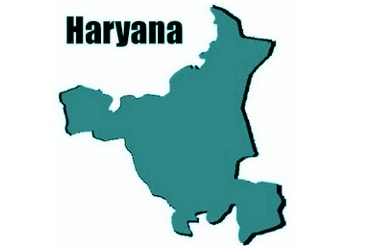 Digital Haryana Roadmap will promote increased use of IT tools in the state and aid in a hassle-free delivery of citizen-centric services. Digital Haryana Roadmap will promote increased use of IT tools in the state and aid in a hassle-free delivery of citizen-centric services.
The Chief Minister, who was presiding over a meeting of CM Digital Haryana Cell here, said that not just delivery of services, but also the working of offices would undergo a complete change.
This is under the Digital Haryana Roadmap 2017-19.
The roadmap has been designed to convert governance into "Saral Shashan" which has been defined as "simple, all-inclusive, real-time, action-oriented and long lasting governance."
Under this, all departments where Information Technology-related projects are being implemented, would be connected.
The coordination would be established among them for proper monitoring of projects and policies.
Emphasis would be laid on curbing corruption and promoting digital literacy.
Service delivery to citizens would include immunisation updates through voice bursts, online calls with doctors, direct scholarship debit to bank accounts, real-time attendance updates to parents through SMS.
Other services include information on local voter registration via SMS, new service updates through Atal Seva Kendras, auto authentication for marriage registration and online registration of new apartments.
The government offices would be transformed to facilitate, among other things, daily feedback on school enrolment and bulk SMS to parents of children to improve attendance in schools.
It will also be promoting paperless governance.
Playing the enablers for various IT initiatives facilitating transformation across the state will be Atal Seva Kendras, online mobiles, and government offices.
Digital Haryana Roadmap 2017-19 was reaffirmation of the state government's resolute resolve to serve the people well.
It will make life easy by 'cutting down interface between the people and the administration' through increased use of IT tools.
185 IT projects are being implemented or are under process of implementation in the state, of which ten per cent are being implemented by the Central Government.
20 per cent projects have budget provision of more than Rs one crore, 50 per cent projects were launched in the last two years, and 70 per cent are being implemented through government agencies.
Haryana
- Area: 44,212 km²
- Capital: Chandigarh
- Population: 27.76 million (2016)
- Chief minister: Manohar Lal Khattar
|
▼ 209 MoUs signed at Momentum Jharkhand [02-20-17]
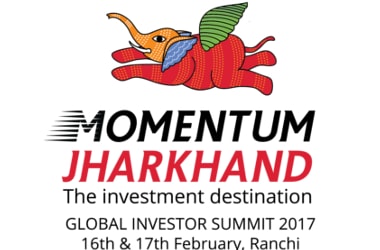 Around 209 MoUs were signed between different companies at the Momentum Jharkhand, a two-day global investors summit held in Ranchi, state capital. Around 209 MoUs were signed between different companies at the Momentum Jharkhand, a two-day global investors summit held in Ranchi, state capital.
Due to these MoUs, investment worth 3 lakhs, 39 thousands and 87 crores rupees will come in the state.
These investments will create direct job for two lakhs nine thousands and 176 people while indirectly create about four lakhs employment opportunities.
Out of total 209, the maximum numbers of MoUs were signed in mining sector which is 121. It was followed by IT and e-governance, with 30 MoUs while Urban development and housing with 17 MoUs.
Jharkhand: Know More
- Founded: 15 November 2000
- Area: 79,714 km²
- Capital: Ranchi
- Population: 31.9 million (2012)
|
▼ India ranks 143 in Index of Economic Freedom [02-20-17]
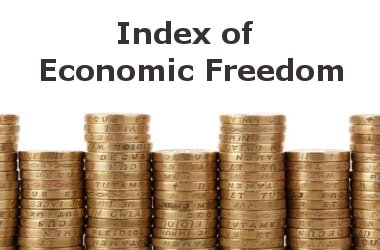 India has ranked a dismal 143rd in an annual index of economic freedom by a top American think-tank, behind its several South Asian neighbours including Pakistan. India has ranked a dismal 143rd in an annual index of economic freedom by a top American think-tank, behind its several South Asian neighbours including Pakistan.
The progress on market-oriented reforms has been “uneven” as per the index.
The Heritage Foundation in its Index of Economic Freedom report said despite India sustaining an average annual growth of about 7 per cent over the past five years, growth is not deeply rooted in policies that preserve economic freedom.
Putting India in the category of “mostly unfree” economies, the conservative political think-tank said progress on market-oriented reforms has been “uneven”.
Also, India’s overall score of 52.6 points is 3.6 points less than that of last year, when India was ranked 123rd.
Hong Kong, Singapore and New Zealand topped the index.
Among South Asian countries, only Afghanistan (163) and Maldives (157) were ranked below India. Nepal (125), Sri Lanka (112), Pakistan (141), Bhutan (107), and Bangladesh (128) surpassed India in economic freedom.
The think-tank, however, credited Prime Minister Narendra Modi with “reinvigorating” India’s foreign policy
India is a significant force in world trade, the report noted, but corruption, underdeveloped infrastructure, and poor management of public finance undermine overall development.
China with a score of 57.4 points - an increase of 5.4 points compared to previous year - was placed at 111 position. The United States was ranked 17 with 75.1 points.
The world average score of 60.9 is the highest recorded in the 23-year history of the index. Forty-nine countries - the majority of which are developing countries, but also including countries such as Norway and Sweden - achieved their highest-ever index scores.
|
▼ Banks need INR 91,000 cr for 8-9% growth : Ind-Ra [02-16-17]
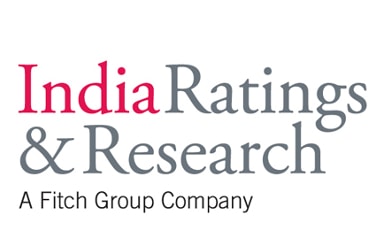 Indian banks will require INR 91,000 crore in tier-1 capital till March 2019 to sustain a minimum annual growth rate of 8-9 percent, according to a report by India Ratings and Research (Ind-Ra). Indian banks will require INR 91,000 crore in tier-1 capital till March 2019 to sustain a minimum annual growth rate of 8-9 percent, according to a report by India Ratings and Research (Ind-Ra).
This includes INR 20,000 crore of residual tranches from the government's capital infusion in public sector banks under the under 'Indradhanush' programme.
There is an increasing divide between the large and smaller PSBs, with the former having some access to growth capital, better market valuation, and also some non-core assets to divest.
The latter would only receive bailout capital if required.
The long tail of credit costs is expected to subdue profitability of domestic banks despite plateauing their stressed assets.
Ind-Ra has maintained a stable rating and sector outlook on private sector banks and large PSBs while it has retained the negative sector outlook for small, mid-sized state-owned banks for 2017-18.
It expects large PSBs with better access to capital and private sector banks with their robust capitalisation to navigate another year of low growth and rising credit costs with a stable outlook.
The agency had retained its negative outlook on mid-sized and smaller PSBs with weak capitalisation and large stock of ageing non-performing loans (NPLs).
These banks will find it increasingly difficult to grow given increasing capital requirements and large funding gaps impeding their ability to compete on spreads as per Ind-Ra.
According to Ind-Ra's sector-wise stress analysis, sectors such as iron and steel and textiles have seen recognition but provisioning might still not be enough to protect against eventual loss given defaults.
Significant proportion of unrecognised stress pertains to sectors such as infrastructure, realty and capital goods which potentially have long-term viable assets.
These would increasingly need cash flow restructuring to avoid slippages.
NPLs: Know More
- A nonperforming loan (NPL) refers to a sum of borrowed money upon which the debtor has not made his scheduled payments for at least 90 days.
- A nonperforming loan is either in default/close to being in default.
- Once a loan is nonperforming, the odds that it will be repaid in full are considered to be low.
|
▼ GNFC Township: India's first cashless township [02-15-17]
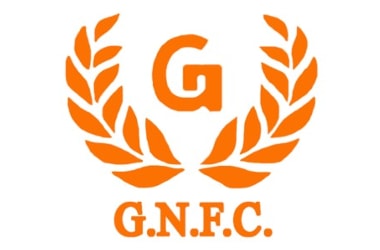 Gujarat Narmada Valley Fertilizers (GNFC) township, the state owned company’s township at Bharuch, is 100% cashless and probably the first such township in India. Gujarat Narmada Valley Fertilizers (GNFC) township, the state owned company’s township at Bharuch, is 100% cashless and probably the first such township in India.
It has a population of around 5,000 and floating population of around 10,000 every day.
It has facilities like a big shopping centre, restaurants, eateries, schools and colleges, hospital, stadium, guest house, etc.
The GNFC township shall be launched by Gujarat chief minister Vijay Rupani on February 13 at Bharuch.
The GNFC is the first integrated industrial township in the country to go 100% digital in all financial transactions.
All the shops in the Gujarat Narmada Valley Fertilizers township, which include paan shops, laundries, vegetable shops, barber shops, provision stores, cycle repairing shops, flour mills, conduct their business only through cashless transactions.
Transactions are done using PoS machines, e-wallets like BHIM, UPI, SBI Buddy, etc.
|
▼ Indian economy to grow 7.4% next fiscal [02-15-17]
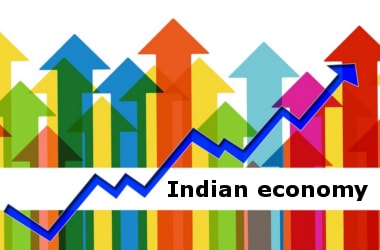 The Indian economy is likely to grow by 7.4% in the next fiscal, according t India Ratings and Research. The Indian economy is likely to grow by 7.4% in the next fiscal, according t India Ratings and Research.
GDP growth estimate for 2016-2017 has been revised from 6.8 to 7.9 percent, lower than the CSO advanced estimate of 7.1%.
Gross value added of three production sectors, namely agriculture, industry and services would grow at 3%, 6.1% and 9.1% Y-O-Y in this fiscal.
The current account deficit will come at 1% of the GDP in 2017-2018 as against 0.9 percent in 2016-2017.
This will help the rupee trade at an average 69.18/USD in FY18.
India is likely to face continued headwinds on the exports front due to the play out of Brexit and the anti-globalisation stance of US President Donald Trump and imports are unlikely to pick up so long as the domestic investment cycle does not revive.
As against the popular perception, Ind-Ra said the main setback to investment growth came from the negative 2.2 percent growth in the gross fixed capital formation (GFCF) of household sector.
Ind-Ra expects GFCF to grow at 4.9 percent in 2017-18.
India's economic growth forecast of 7.4 percent by Ind-Ra in 2017-18 is on the upper end of the 6.75 to 7.5 percent band estimated in the Economic Survey.
Ind-Ra: Know More
- India Ratings & Research (India Ratings) is a rating agency committed to providing the India's credit markets with accurate, timely and prospective credit opinions.
- India Ratings has grown rapidly during the past decade gaining significant market presence in India's fixed income market.
- India Ratings is a wholly owned subsidiary of the Fitch Group.
- India Ratings currently maintains coverage of corporate issuers, financial institutions.
- India Ratings is headquartered in Mumbai and has six branch offices located at Ahmedabad, Bengaluru, Chennai, Delhi, Hyderabad and Kolkata.
- India Ratings is recognised by the Securities and Exchange Board of India, the Reserve Bank of India and NHB.
|
▼ India Inc FDI declines by 57% [02-14-17]
 Corporate India FDI overseas fell by 57% to USD 1.82 billion, in Jan 2017 according to RBI data. Corporate India FDI overseas fell by 57% to USD 1.82 billion, in Jan 2017 according to RBI data.
Investments made in Jan 2016 amounted to USD 4.25 billion in contrast.
Of the total overseas direct investment of USD 1.82 billion, USD 246.37 million came in the form of equity money; USD 483.78 million through loans.
While the rest of USD 1.09 billion was the guarantee issued by the Indian firms in their foreign units.
Among a few major investors, Bharat Petrosources invested USD 721.42 million in four tranches in joint venture and wholly owned subsidiary in Australia and Singapore.
Intas Pharmaceuticals invested USD 344.35 million in its fully owned unit in the UK, while ONGC Videsh put in a total of USD 52.59 million in four different joint ventures in Myanmar, Russia and Vietnam.
Reliance Industries invested USD 40 million in its wholly owned energy services unit in Singapore.
|
▼ RBI keeps repo rate unchanged [02-9-17]
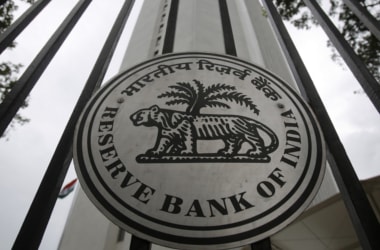 The Reserve Bank of India (RBI) has kept the repo rate unchanged at 6.25% in its monetary policy review on 8th Feb 2017. The Reserve Bank of India (RBI) has kept the repo rate unchanged at 6.25% in its monetary policy review on 8th Feb 2017.
It was citing inflation concerns after the first quarter of the next financial year, once the base effect vanishes.
The RBI said all the six members of the monetary policy committee voted in favour of the decision.
“ Favourable base effects and lagged effects of demand compression may mute headline inflation in Q1 of 2017-18,” the central bank said in a statement.
“Thereafter, it is expected to pick up momentum, especially as growth picks up and the output gap narrows. Moreover, base effects will reverse and turn adverse during Q3 and Q4 of 2017-18,” the RBI added.
Now, the RBI has projected inflation in the range of 4.0 to 4.5% in the first half of the financial year and in the range of 4.5 to 5.0% in the second half.
The central bank cited ‘three significant upside risks’ that impart some uncertainty to the baseline inflation path -
- The hardening profile of international crude prices;
- Volatility in the exchange rate on account of global financial market developments, and the
- Fuller effects of the house rent allowances under the 7th Central Pay Commission (CPC) award.
At the same time, the RBI lauded the Central government for its effort in maintaining fiscal discipline that could have a favourable impact on inflation. Monetary Policy Review- Repo rate under the liquidity adjustment facility (LAF): Unchanged at 6.25 percent.
- Reverse repo rate under the LAF: Unchanged at 5.75 per cent.
- Marginal standing facility (MSF): Unchanged at 6.75 per cent.
- Bank Rate: Unchanged at 6.75 per cent.
- Reserve Ratios Cash Reserve Ratio (CRR) of scheduled banks: Unchanged at 4.0 per cent of net demand and time liability (NDTL).
- Statutory Liquidity Ratio (SLR): Unchanged 20.75 per cent.
|
▼ Indian economy to overtake US by 2040 in PPP: PwC [02-8-17]
 The Indian economy is expected to overtake the US by 2040 in PPP terms. The Indian economy is expected to overtake the US by 2040 in PPP terms.
The global economic order is expected to shift from advanced to emerging economies over the next few decades.
By 2040, India could edge past the US to become the world's second largest economy in purchasing power parity (PPP) terms, as per a PwC report.
According to PwC, E7 economies comprising Brazil, China, India, Indonesia, Mexico, Russia and Turkey would grow at an annual average rate of almost 3.5 per cent over the next 34 years.
This is compared to just 1.6 per cent for the advanced G7 nations of Canada, France, Germany, Italy, Japan, the UK and the US.
In fact, China has already overtaken the US to become the world's largest economy in PPP terms, while India currently stands in third place and is projected to overtake the US by 2040 in PPP terms.
PwC believes Vietnam, India and Bangladesh would be three of the world's fastest growing economies over this period.
We will continue to see shift in global economic power away from established advanced economies towards emerging economies in Asia and elsewhere.
The E7 could comprise almost 50 per cent of world GDP by 2050, while the G7's share declines to only just over 20 per cent.
To realise this growth potential, emerging market governments need to implement structural reforms to improve macroeconomic stability, diversify their economies away from undue reliance on natural resources (where this is currently the case), and develop more effective political and legal institutions.
Challenges include falling global trade growth, rising income inequality within many countries and increasing global geopolitical uncertainties are intensifying the need to create diversified economies.
This create opportunities for everyone in a broad variety of industries.
|
▼ Andaman and Nicobar Islands to get first railway line! [02-8-17]
 The Union Railway Ministry has approved a 240-KM broad-gauge railway line project in Andaman and Nicobar islands. The Union Railway Ministry has approved a 240-KM broad-gauge railway line project in Andaman and Nicobar islands.
The first railway line on Andaman and Nicobar Islands will connect Port Blair (capital) in the south with Diglipur, the biggest town on the north Andaman Island.
Presently both destinations are linked by a 350-km bus service that takes over 14 hours and a ship that takes around 24 hours and there is no air connectivity.
Following completion, it will give fillip to tourism from the current 4.5 lakh visitors a year to around 6 lakh a year.
About A & N Islands:
- Andaman and Nicobar Islands are a group of islands at the juncture of the Bay of Bengal and Andaman Sea.
- It is one of the seven UTs of India.
- It comprises two island groups, the Andaman Islands and the Nicobar Islands, separated by the 10°N parallel.
- The islands host the Andaman and Nicobar Command, the only tri-service geographical command of the Indian Armed Forces.
- The islands are home to the only known Paleolithic people, the Sentinelese people.
|
▼ India innovation index portal launched [02-3-17]
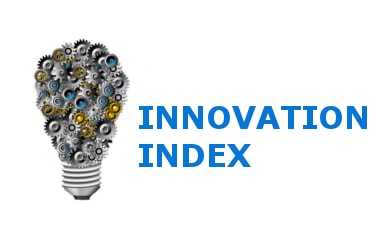 To make India an innovation-driven economy, NITI Aayog, Department of Industrial Policy & Promotion (DIPP) and Confederation of Indian Industry (CII) together launched a mega initiative “India Innovation Index” on Feb 2nd 2017. To make India an innovation-driven economy, NITI Aayog, Department of Industrial Policy & Promotion (DIPP) and Confederation of Indian Industry (CII) together launched a mega initiative “India Innovation Index” on Feb 2nd 2017.
This will rank states on Innovations through country’s first online innovation index portal that will capture data on innovation from all Indian states on innovation and regularly update it in real time.
The India Innovation Index Framework will be structured based on the best practices followed in Global Innovation Index (GII) indicators.
Additionally it will function by adding India-centric parameters those truly reflect the Indian innovation ecosystem.
Inaugurating the India Innovation portal, Mr Amitabh Kant, CEO NITI Aayog said, “This portal will be a first-of-its-kind online platform where Global Innovation Index indicators and India–centric data from various states will be coalesced.”
Data collated on this portal will not only be used to ameliorate current data gaps w.r.t the GII, but be the prime source for the India Innovation Index, which will be jointly developed by NITI Aayog, DIPP and CII.
This is in consultation with World Economic Forum, the World Intellectual Property Organization, Cornell University, OECD, UNIDO, ILO, UNESCO, ITU and others.
The aim is to rank Indian states as per their innovation prowess.
It will also provide impetus to them to build their respective innovation ecosystems and spur the innovation spirit among institutions and people.
Global Innovation Index: Know More
- The Global Innovation Index (GII), co-published by World-Intellectual Property Organization (WIPO), Cornell University and INSEAD with CII as a Knowledge Partner since inception.
- It has been ranking world economies including India since 2007 according to their innovation capabilities and outcomes.
- It uses 82 indicators among a host of other important parameters.
- It has established itself as both a leading reference on innovation and a ‘tool for action’ for policy makers.
- India currently ranks 66th out of 128 countries on the Global innovation Index (GII) 2016.
|
▼ Nuclear Power to contribute more electricity in country [02-3-17]
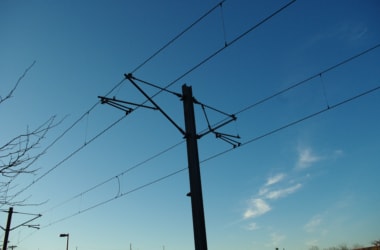 The share of nuclear power in the total electricity generation in the country was about 3.4% in the year 2015-16. The share of nuclear power in the total electricity generation in the country was about 3.4% in the year 2015-16.
It will be progressively increased by addition of nuclear power capacity.
The present capacity of 5780 MW will reach 6780 MW by the end of this financial year, with the commercial operation of Kudankulam Unit-2, which is already generating infirm power at the rated capacity.
The capacity is expected to reach 9580 MW by 2020 on progressive completion of projects under construction and about 12980 MW by 2024 on completion of new projects accorded sanction.
A large expansion programme based on both Indian technologies and with foreign technical cooperation is planned ahead.
GoI has also given ‘in principle’ approval for the site at Kovvada in Srikakulam district of Andhra Pradesh.
This is for setting up six Light Water Reactors in cooperation with the USA.
Pre-project activities including land acquisition, obtaining statutory clearances and detailed site investigations are continuing at the site.
In parallel, discussions on the techno-commercial aspects with M/s Westinghouse Electric Company (WEC) to arrive at a project proposal have also started.
|
▼ Rashtriya Rail Sanraksha Kosh to be launched [02-1-17]
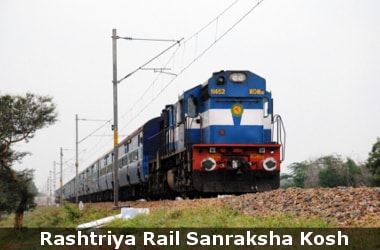 The Union Finance Ministry has agreed to contribute partially to a new dedicated railway safety fund. The Union Finance Ministry has agreed to contribute partially to a new dedicated railway safety fund.
It is named as ‘Rashtriya Rail Sanraksha Kosh’ and presented in the upcoming Union Budget 2017-18.
The proposed safety fund will be utilised for track improvement, bridge rehabilitation, rolling stock replacement, human resource development, improved inspection system and safety work at level crossing.
The Finance Ministry is likely to grant a fresh infusion of only INR. 5,000 crore in the upcoming financial year out of the initial proposed corpus of INR. 20,000 crore.
About INR. 10,000 crore will be earmarked from the Central Road Fund (CRF).
This is collected by levying a cess on diesel and petrol at present for safety-related work.
Railways may now be asked to fund the remaining INR. 5,000 crore for the initial corpus from its own resources.
For this, Indian Railways may either have to bring back a cess on rail tickets to finance its share of Rail Safety Fund or look to fund it from non-budgetary resources.
About the Rashtriya Rail Sanraksha Kosh
- Railways requested Union Finance Ministry to create ‘Rashtriya Rail Sanraksha Kosh.
- This is a ‘non-lapsable’ safety fund of INR. 20,000 crore over five years.
- Its request was based on the recommendations of a high-level safety review committee.
- This was headed by Dr. Anil Kakodkar, former Chairman Atomic Energy Commission.
- The Committee, in its report submitted in 2012, had projected an investment requirement of INR. 1 lakh crore on safety over five years.
|
| Chronology of events |
|
For the first time, the Economic Survey has used Big Data Analysis to “shed new light on the flow of goods and people within India. Survey produces the first estimate of the flow of goods across states within India, based on analysing transactions level data provided by the Goods and Services Tax Network (GSTN).
|
|
A new scheme will be launched in 2017-18 to create infrastructure for exports, a move aimed at reducing transaction costs for traders. A new and restructured central scheme with a focus on export infrastructure, namely, Trade Infrastructure for Export Scheme (TIES) will be launched in 2017-18.
|
|
In a massive crackdown on unauthorised agencies offering Aadhaar-related services illegally and charging excessive money from the public, Unique Identification Authority of India (UIDAI) has shut down 12 such websites and 12 mobile apps available on the Google Playstore.
|
|
The Railway Ministry is set to approve the project, which will connect the Andaman and Nicobar island’s capital city in the south with the largest town on the north Andaman island currently linked by a 350-km bus service that takes over 14 hours and a ship that takes around 24 hours.Currently, there is no air connectivity.
|
|
All Public Sector Banks are expected to join the Bharat Interface for Money (BHIM) app for digital payments by the end of February, the National Payments Corporation of India said.
|
|
There has been a positive growth in exports to the tune of 4.37 percent in rupee terms and 0.75 percent in US Dollar terms between April and December last year in merchandise exports, compared to the corresponding period the previous year according to GOI.
|
|
Reserve Bank of India (RBI) has decided to set up an inter-disciplinary panel on cybersecurity to examine various threats and suggest measures to deal with it.
|
|
Govt allocates Rs 13,000 crore to DoT for BharatNet, NFS, GoI has allocated Rs 13,000 crore to the Department of Telecom (DoT) to roll out broadband network across gram panchayats and building alternate communications network for Defence, as per the Output-Outcome Framework for Schemes 2017.
|
|
Creating an all time-record, India's public sector agriculture research institution led by the ICAR had released 310 new crop varieties during 2015-16 (Nov-Oct period) which would not only help the country in increasing farm production with minimum use of inputs but also make the farming climate resilient in due course.
|
|
Exports go up 4% to $22 bn in Jan, gold imports slip 30% India's exports rose for the fifth straight month in January, up 4.32 percent, to USD 22.11 billion on increase in shipments of petroleum products, engineering goods and iron ore even as trade deficit widened to USD 9.84 billion.
|
|
Telecom regulator Trai has set up a joint committee consisting of industry representatives to examine and identify regulations and tariff orders that are out of sync with times.Telecom regulator Trai has set up a joint committee consisting of industry representatives to examine and identify regulations and tariff orders that are out of sync with times.
|
|
India has sanctioned a soft loan of $340 million to Nepal for various infrastructure development programmes.
|
|
The GST Council has approved a law to compensate states for any loss of revenue from the implementation of the new nationwide indirect taxation regime.
|
|
Indigenous digital payments app BHIM, which the government launched last December for fast and secure cashless transactions, has recorded 17 million downloads so far, Niti Aayog CEO Amitabh Kant on 21st Feb 2017 said.
|
|
According to the International Monetary Fund (IMF), Indian economy is in fairly good shape and is likely to be less affected than other emerging economies if there is a further shock to the global economy.
|
|
The adoption of the Goods and Service Tax (GST) could help raise India’s medium-term gross domestics product (GDP) growth to over 8% and create a single national market for enhancing the efficiency of the movement of goods and services, the International Monetary Fund (IMF) said.
|
|
Rajasthan has become the second largest crude oil producer in the country after the offshore field Bombay High, Governor Kalyan Singh said in the Assembly highlighting the achievements of the state government.
|
|
Bengal leather industry produces INR 13,000 cr goods : West Bengal Finance Minister Amit Mitra said that the leather industry in the state produced INR 13,000 crore worth goods, of which exports stood for INR 7,000 crore in 2015-16.
|
|
SIDBI expert panel sanctions INR 1,112 cr to funds for startups An expert committee set up by SIDBI has sanctioned INR 300 crore to fund managers who would invest in startups, taking the total sanctions so far this fiscal to over INR 1,100 crore, the government said.
|
|
Overseas investors have pumped in over INR 14,600 crore into the Indian capital markets this month so far, enthused by clarity on FPI taxation.
|
|
The latest inflow followed a net pullout of INR 80,310 crore from equity and debt together in the past four months (October-January).
|
|
After RBI and IMF, economic think-tank National Council of Applied Economic Research (NCAER) has lowered the country’s growth forecast to 6.9 percent for the current fiscal on account of demonetisation.
|